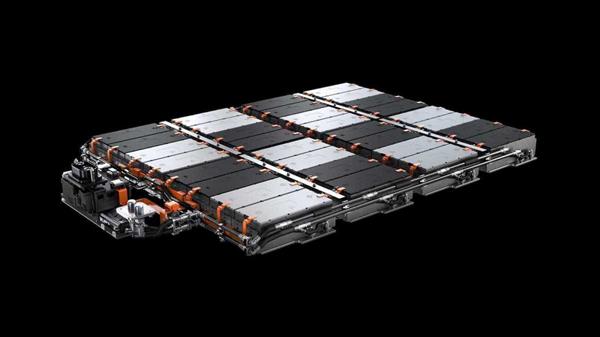(MENAFN- Asia Times) Major electric-vehicle (EV) battery markers in China have been cutting their headcount because they're not receiving enough orders to fully utilize their fast-growing production capacity.
The down cycle in the EV battery sector began partly because the Chinese government from the beginning of this year stopped subsidizing EV buyers, analysts say. Also, rising raw materials costs are blamed for the sector's slowdown.
Due to the slowing global demand for EVs, some Chinese battery makers are diversifying to the new-energy storage sector, say some industry experts.
Most EV battery factories in Changzhou, Jiangsu province, have been downsizing in recent months, according to tfcaijing.com , a Guangzhou-based news website.
“Many EV battery makers are struggling this year and trying to reduce their headcount,” Wang Feng (pseudonym), a manager at a Changzhou-based recruitment agency, says in the report.
Wang says most EV battery makers hired more staff in early 2022 but now they have no job vacancies.
The combined output of all EV battery
makers in Changzhou rose 140% to 170 billion yuan (US$24.7 billion) last year from 2021. The hub for major EV battery makers, including Contemporary Amperex Technology Co (CATC) and China Aviation Lithium Battery (CALB), produces about 20% of all EV batteries in China.
A worker surnamed Li says CALB does not allow staff to work overtime as it is now receiving fewer orders. After having made around 7,000 to 8,000 yuan a month, he says, now with fewer work hours he can make only 4,000 to 5,000 yuan.
TFCaijing.com says the number of workers at CALB's factory in Changzhou has already decreased to 5,000 from its peak of 10,000. CALB has not yet responded to media inquiries.
According to the China Industry Technology Innovation Strategic Alliance for Electric Vehicles, Chinese firms produced 545.9 GWh of EV batteries in 2022, 294.6 GWh of which were used in cars while 68.1 GWh were shipped overseas. It means that an oversupply of about 180 GWh of EV batteries was made in 2022.

Contemporary Amperex Technology Co (CATL) is the world's largest lithium-ion battery manufacturer for e-vehicles. Photo: catl.com
Chinese companies produced 219.7 GWh of EV batteries in 2021 and 154.5 GWh of them were actually used in cars.
At the end of last year, CATL had a 50.1% share in China's EV battery markets, followed by BYD (24.2%), CALB (5.6%), Gotion High tech (4.7%) and Eve Energy (2.4%). The remainder was shared by smaller firms such as SVOLT Energy Technology Co.
Wang Zidong, deputy secretary-general of the China Industry Technology Innovation Strategic Alliance for Electric Vehicles, predicted last November that the demand for new energy cars in China would decline in 2023, resulting in the oversupply of EV batteries. He has been proven right by the latest auto sales figures.
Slowing EV sales growth The China Passenger Car Association (CPCA) said Monday that a total of 1.31 million units of new energy vehicles were sold in the first quarter of this year, up 22.4% from a year earlier. However, such growth was much slower than the 147% year-on-year increase in the same period of 2022.
The penetration rate of e-vehicles in China rose to 34.2% last month from 28.1% a year earlier, meaning that about one-third of newly-sold passenger cars were either electric or hybrid cars.
At the end of last month, key Chinese automakers, including BYD and Changan Automobile, had a combined 67% share in the domestic EV markets while Tesla had 14%. Joint ventures of foreign and local companies, such as Audi-FAW, had a 6% market share. Other smaller players include NIO, Li Auto and XPeng.
The year-on-year growth rate of global EV sales declined from 107% in 2021 to 55% last year, according to Canalys, a technology market analyst firm.
“The spike in electricity prices in Europe makes battery-electric vehicle (BEV) running costs less attractive while some countries, like the United Kingdom, Switzerland and Australia, are starting to introduce EV taxation,” Pedro Pacheco, an analyst at Gartner, says in a research report.
“China ended EV subsidies at the beginning of 2023, and global charging infrastructure still has many coverage gaps and the average quality of service is poor,” Pacheco says, listing other roadblocks.
He predicts that BEV
sales may grow at a considerably lower pace or stall in some markets this year.
After Tesla launched its first EV, called the Roadster, in 2008, China decided to boost its EV sector. In 2010, the Chinese government started offering subsidies to EV buyers. The policy ended at the beginning of this year.
Mo Ke, founder and chief analyst at RealLi Research, says most EV battery makers are now trying to cut costs as the sector's oversupply situation will probably continue for the rest of this year. Mo says some of these companies will diversify to the new-energy storage sector.
According to a research report published by AVIC Securities, global demand for batteries used in solar, wind and hydropower plants will grow to 233GW in 2025 from 50GW in 2022.
read: ford-catl deal exposes trade and tech war limits
Follow Jeff Pao on Twitter at
@jeffpao3
Like this:Like Loading...
























Comments
No comment